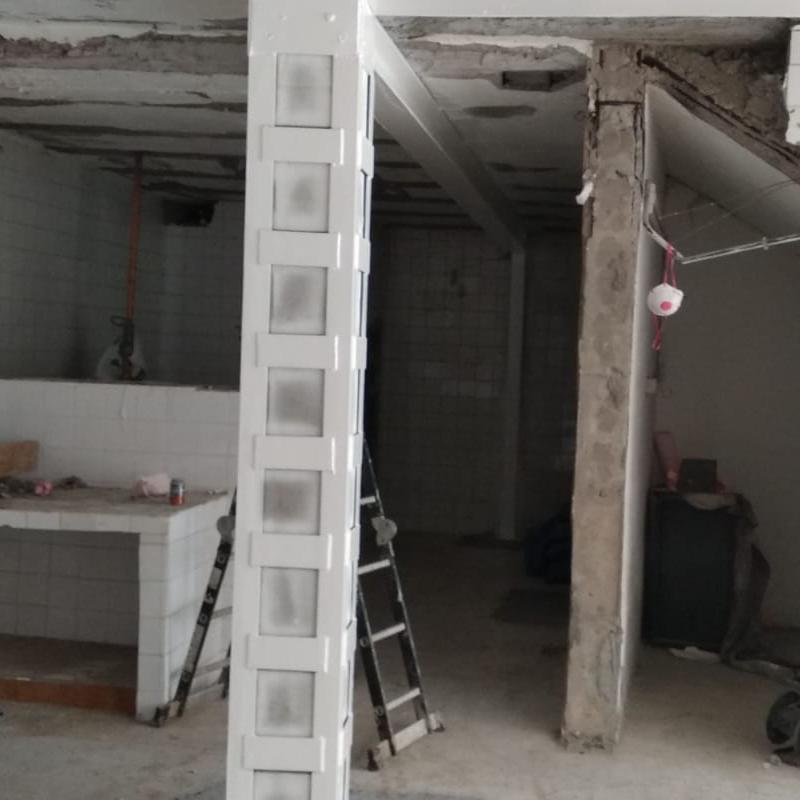Intumescent paints are an increasingly used way of providing passive fire protection to structures, especially steel which is increasingly used today.
These paints have some advantages:
Does not modify the intrinsic properties of the materials, e.g. mechanical properties
It is easily processed and different versions of intumescent paints can be used on a variety of materials such as steel, wood, composites and concrete.
How do intumescent paints work?
Intumescence is a reactive coating that swells as a result of exposure to heat, increasing in volume and decreasing in density.
Intumescent paint is a coating that reacts to heat by swelling in a controlled manner up to several times its original thickness producing a carbonaceous foam, formed by a large number of small bubbles that act as an insulating layer that protects the substrate.
The purpose of intumescent products is to prevent the collapse of the structure, which can occur if it reaches its critical temperature state.
For steel, it is the temperature at which the load-carrying capacity equals the effect of the applied loads (so the load-bearing element would be very close to collapse). The critical temperature of steel can vary between 350°C and 750°C, depending on the loading scheme, but in most cases it is between 500°C and 620°C.
For concrete, the critical state is linked to the critical temperature of the reinforcing bars (usually between 350°C and 500°C) and the reaching of a temperature of 500°C inside the concrete element. For wood it is linked to the residual section of the load-bearing element after combustion.
Application of intumescent paints on steel
Intumescent paints are always part of a system.
For work on steel, an anticorrosive primer and (in many cases) a topcoat are included.
The purpose of the primer is: to ensure adhesion, to protect against corrosion and to ensure adhesion of the carbonaceous foam formed during exposure to fire.
The purpose of the finish coating is: an aesthetic function and, in some cases, a sealing function that prevents early degradation, resistance to weathering and the conditions of use.
The steel must be prepared to SA 2 ½ standard before being coated with a compatible primer or, if already painted with a compatible primer, it must be cleaned (free of grease, oil, dirt, grime, rust or other contaminant that may inhibit bonding).
Correct application of intumescent paints
Intumescent coatings are preferably applied by spraying with an airless spray gun due to the quality and speed of the finish.

During application it is necessary to frequently measure the thickness of the wet coating with a thickness gauge.
The maximum thickness that can be applied in each coat varies from product to product (see the corresponding technical data sheets) as well as the related consumption.
Intumescent paint for normal interior applications can be used without any additional decorative coating.
For exterior, semi-exposed or high humidity applications, it is necessary to add a finish.
The nature of the environment to which the coatings will be exposed may affect their durability or performance in a fire situation. If necessary, a topcoat should be applied to the surface of the intumescent coating as protection against environmental degradation or for decorative purposes.
Intumescent paints can also be used to protect concrete.
In this case, the thickness required to achieve a specific strength is calculated taking into consideration the critical temperature of the steel of the reinforcing bars (between 350º and 500ºC) and the concrete cover (the smallest distance between the surface of the reinforcement and the outer surface of the concrete).
The intumescent coating, especially in the transparent version, can also be used to protect wood, reducing the reaction to fire and improving the fire rating.